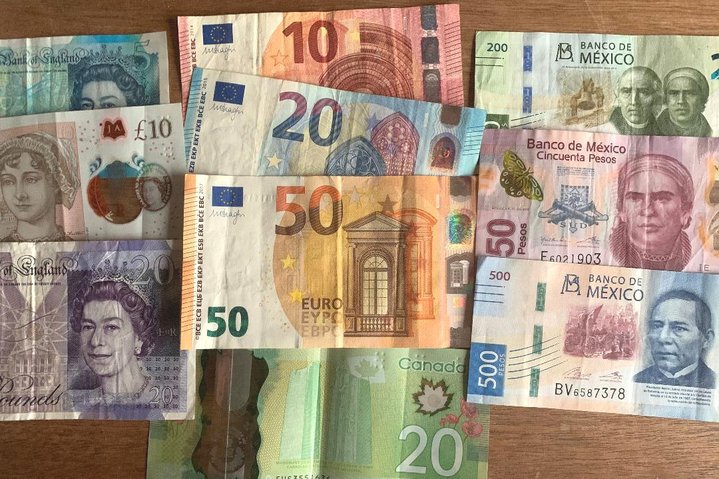How much cash have you got in your wallet or purse? Someone did a study on this and came up with the average amount that Americans carry on their person: $46.* Just enough to keep you out of trouble, get a cab home if you’re stuck on the other side of town, pay for half a tank of gas. Not enough for a motel for the night, a decent dinner for two or a tow truck. But why carry more when credit and debit cards take care of virtually all of life’s needs?
* It’s hard to come up with a number—the $46 is from an eight-year old Survey of Consumer Payment Choice. Then there’s $22 from Visa (7 years old). Anyone find something more recent and definitive?
I used to carry a few dollar bills on me for panhandlers. Yeah, I know, just encourages them, they only spend it on meth, etc. etc., but it’s purely selfish: it just feels good, something I do for myself. Nowadays I usually carry a couple of fives, on the theory that a buck really isn’t going to do anyone much good. Gone are the days when Bing Crosby crooned, Buddy, can you spare a dime? Today a five — spent right — will buy coffee and bagel with cream cheese.
This line of thought was prompted by an article on the Yahoo! life website titled, “This Is Exactly How Much Cash You Should Carry at All Times.” The author cites a survey from Money magazine that found that 42 percent of the people carry no more than $40 in cash, 30 percent carry between $41 and $99, 17 percent carry $100 to $199, and 11 percent carry $200 or more. (I just checked: I’ve got $65 in my wallet, three twenties and a five.) The writer claims that the magic sum is $200 because “it’s enough to handle a standard emergency, but not a cataclysmic one.” I’d feel anxious walking around with that much, while $65 feels OK.
Is the pandemic changing our approach to cash? Early on, before the WHO and CDC advocated masks, it was all about staying at home, washing hands and avoiding touching anything that might be carrying the virus — like money! An Ohio State study found that 87% of one-dollar bills were infected with bacteria. (Somehow, ones seem more vulnerable to contamination, even if you avoid panhandlers and lap dancers.) Will we emerge from the Weird Times essentially cashless, trusting that plastic will take care of all our needs?
Having spent much of my life in other parts of the world, I can confirm that we’re more plasticized than most countries, excepting parts of western Europe (in particular Scandinavia). In Mexico, for instance, where my wife and I usually run away to every winter, cash is still king. Little by little, bank credit and debit cards are increasingly accepted, but not usually in the places where we prefer to hang out, i.e. middle-of-the-road cafes and bars. Offer the mesero a U.S. Visa or Amex card and you’ll likely get No lo aceptamos. Perhaps, just maybe, they’ll accept a Mexican Bancomer or Banamex credit or debit card, but grudgingly, since they pay 3-4% to process it. Mostly, especially away from big cities, it’s a cash economy down there.
Finally (and knowing I’m going to get the usual chorus of, “If you don’t like it, go back where you came from”): maybe the reason we use plastic here so much is that US paper currency sucks. It’s green, it’s paper, and it feels kinda worthless. Most other countries, it’s more like thin plastic, and it feels smooth and crisp and durable and valuable. And the notes are gorgeously multi-colored, it’s easy to figure out which is which. Vive la difference!

CLICK TO MANAGE